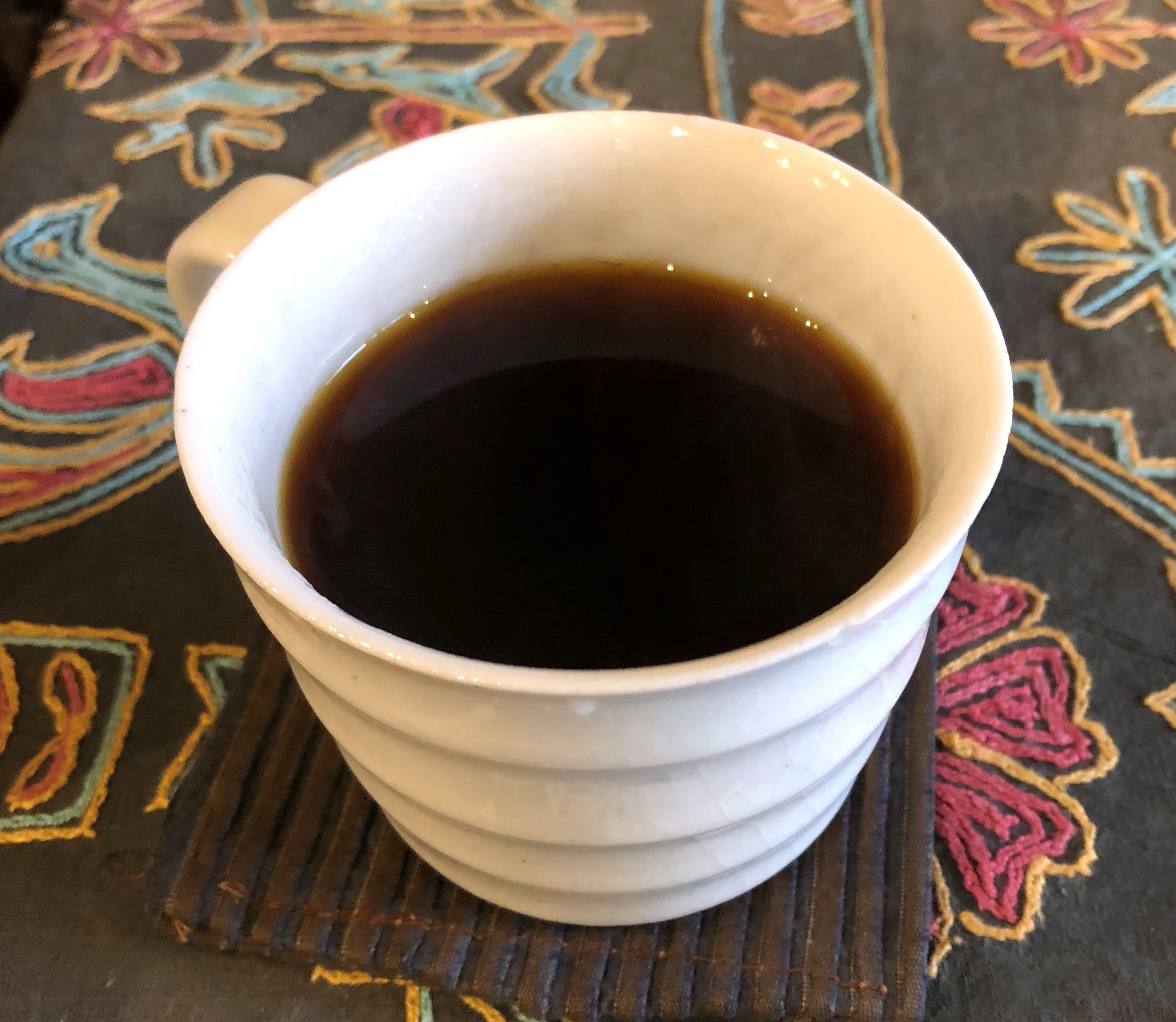
New Coffee Experience
I love cooking meat and fish over a Japanese bincho-tan charcoal fire. I know what this particular charcoal fire does in cooking. For example, when I cook pork chop over exposed bincho-tan charcoal fire, infrared ray, which is emitted from the bincho-tan charcoal fire, permeates into the center of pork chop, thus cooked meat has even texture, and is juicy and moist. A Japanese tea expert and a good friend of mine, Kei Nishida, sent me three sample bags of bincho-tan roasted coffee beans for me to try. According to him Kei added a coffee been business to his existing tea business. He is excited about introducing bincho-tan roasted coffee beans for the first time to his customers in USA.
Sumibi Baisen, is the Japanese name for coffee beans roasted using bincho-tan charcoal fire. The end of Edo period, 1868, is the year when the coffee beans are for the first time officially introduced to Japan. Coffee has already 150 years history in Japan. Roasting coffee beans using bincho-tan goes back to 1920s, 52 years after the introduction. Bincho-tan was used because it was easily available heat source. After gas roaster’s introduction, many coffee beans roaster switched to this new method, because of great efficiency of roasting beans. One of the companies, Hagiwara Coffee Company in Kobe City, which began using bincho-tan in 1928, still sticks to this old bincho-tan roasting method. By using bincho-tan method the beans are roasted uniformly; the roasting brings out the best and rich flavor of beans. These characteristics have been capturing the soul of Japanese coffee aficionado. Kei Nishida is one of them.
I have tasted Colombia single origin, Indonesia single origin and Organic blend. I have ruined the coffee at the first tasting session. I did not follow any guidelines for brewing the best tasting coffee. The water was too hot; I ground beans too fine; the proportion of beans and water weight was wrong; I did not wet the coffee filter with hot water in advance; I did not time and weight at the time of pouring hot water over the ground beans. The coffee tasted extremely bitter….!
I learned how to properly brew coffee, including how much we should grind beans, from these young professionals. Daiki Hatakeyama and Hidenori Izaki; both are award winning coffee experts in Japan. https://www.youtube.com/watch?v=HwIIVTAIQag, https://www.youtube.com/watch?v=o3eMg4DYLKo
Here are the guidelines of brewing good tasting coffee.
- Use 6 – 8g coffee beans for 100g water. (You need an electric scale!)
- Grind coffee beans medium rough. For my coffee beans I process the beans in the grinder only for 7 seconds. If I go more, the bitterness comes out into my brew.
- Suggested water temperature to brew coffee is 85-degree C.
- Wet the coffee filter paper and warm the paper holder with hot water.
- Pour water in 3 stages: First: 20%, Second 20%, Third 60%
- Brewing coffee time is about 3 minutes
Second Sumibi Baisen coffee tasting proved me that wrong brewing process completely destroy the flavor of excellent coffee beans. This time every coffee tasted had a round, rich and delicious flavor. Indonesian beans had a touch of unnecessary bitterness for me. I loved the organic one the best.
Nespresso was finally introduced to the Japanese market in December, 2020. I hope that this coffee machine does not ruin the long nurtured and cherished rich history of making coffee manually at home. Try Sumibi Baisen coffee at your home. It will certainly expand the pleasure of making and enjoying coffee at home.
